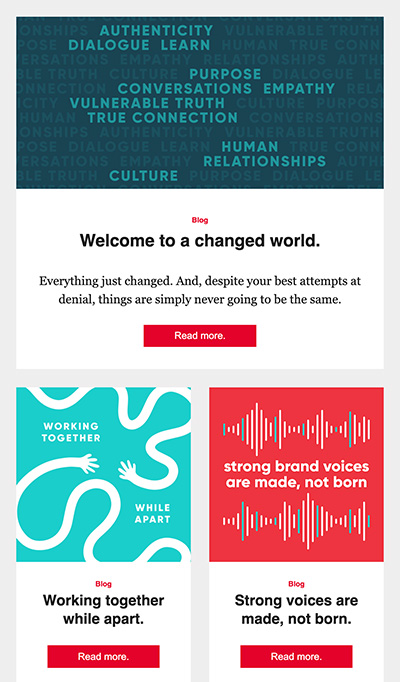How to use AI without losing your brand’s edge. A practical guide for marketers, product leaders, and brand teams
Generative AI can supercharge marketing workflows, but relying too heavily on it risks diluting brand identity. Human strategy and creativity must lead while AI plays a supporting role.

Key Takeaways
- Leaning too much on AI risks producing content that’s generic, safe, and indistinguishable from others.
- Strong brands are built on human insight, emotion, and strategic clarity.
- Use AI as a supportive tool, not a creative or strategic leader.
Introduction
The rise of generative AI has introduced unprecedented speed and scale into marketing workflows. With tools like ChatGPT, Gemini, and others, it’s now possible to produce full campaigns, messaging frameworks, and content strategies in minutes. And in many ways, this is a gift, especially for lean teams under pressure to do more with less.
But there’s a catch. The same technology that helps you move faster can also cause you to think less deeply. AI tends to default to what’s common, what’s safe, and what already exists. That’s not where strong brands live.
As an agency working at the intersection of strategy, creativity, and execution, we’ve seen firsthand how easy it is to blur the line between AI-generated content and human-driven communication. This guide is designed to help you make that distinction clear and keep your brand anchored in clarity, originality, and meaning as you embrace new tools.
What’s Actually at Risk?
AI doesn’t just reduce workload, it reduces friction. And while that sounds appealing, friction is often where the best thinking happens. Wrestling with a creative brief, debating a message hierarchy, and iterating on a brand voice, these moments of tension often lead to sharper strategy and stronger creative.
But more than that, they’re how brands develop emotional and cultural relevance. When we work with brand teams, the goal isn’t just clarity, it’s connection. Deep, meaningful connection that reflects your values, resonates with your audience, and gives people a reason to care.
AI can’t replicate that. It can’t sense when something feels honest or timely. It doesn’t understand cultural nuance, emotional tone, or the difference between brand personality and brand cliché.
When AI becomes a substitute for this kind of human thinking, you risk:
- Content that sounds like everything else
- Campaigns that lack a point of view
- Messaging that aligns with trends but misses your truth
- A slow erosion of internal creative and strategic skills
This isn’t hypothetical. It’s already showing up in real ways. Bland websites, tone-deaf product copy, half-baked thought leadership, and brands with no discernible personality. As Fast Company put it, “In the age of AI, many brands are in danger of watering down their unique identity by letting technology lead their voice.” (source)
The brands that last are the ones that know who they are and insist on showing up that way, every time. No prompt can do that for you.
The Opportunity: Human-First, AI-Supported
The goal isn’t to avoid AI. It’s to make sure you stay in charge of what matters most: your thinking, your message, your positioning, and your creative perspective.
AI can help amplify those things. But it can’t define them for you. That’s still your job.
Five Practices to Keep Your Brand Sharp in the Age of AI
1. Lead with strategy, not with a prompt
Before asking AI to generate anything, take the time to define the problem you’re solving. What are you trying to communicate? What tension are you addressing? What action do you want to inspire?
A good strategy isn’t something AI can invent. It requires a point of view, a sense of timing, and a deep understanding of your audience. Once you have that, you can use AI to help explore variations, accelerate output, or test your framing.
2. Treat AI like a junior collaborator, not a creative director
AI is excellent at quantity, not quality. It can generate 100 headlines in seconds, but it can’t tell you which one feels right for your brand, or whether any of them are distinctive.
Use AI to support brainstorming, not replace it. It can help you get unstuck or explore new angles. But it shouldn’t set the tone, voice, or message hierarchy. That leadership needs to come from your team.
3. Build in space for friction
Some of the best insights come from slow, iterative thinking, especially when you’re naming a new product, positioning a category, or developing a campaign idea. AI might give you something passable in 10 seconds. But “passable” is often the enemy of “compelling.”
Make space for messy, unassisted thinking. Talk through ideas. Challenge assumptions. Explore the hard way first, then use AI to help refine what you’ve uncovered.
4. Use AI for testing and strengthening
One of the smartest ways to use AI is as a challenger. Feed it your messaging and ask:
- “What feels unclear or generic here?”
- “How would a skeptical audience respond?”
- “What would a competitor say in response to this?”
This turns AI into a pressure-testing tool that helps you strengthen ideas before they go live.
5. Protect the work that defines you
There are parts of your brand that should never be AI-driven. Your purpose, your tone of voice, your brand story, your campaign strategy. These are the areas where AI is most likely to flatten nuance or dilute meaning.
Think of AI as automation for the edges of your work. Helping with efficiency, formatting, and exploration. But the center? That should stay fully human.
Closing Thought
AI will make marketing teams faster, more productive, and in many cases more creative. But only if it’s used with intention.
Your brand is a long-term asset. It’s built on real thinking, real conviction, and real creativity. That doesn’t come from prompts. It comes from people who are willing to dig deeper, ask harder questions, and make decisions that reflect something true.
AI can help. But only if you lead.
If your team is exploring how to integrate AI thoughtfully into your workflow, or if you’re unsure where to draw the line, we’re happy to share what we’ve learned. We’re not here to sell fear. Just to help you stay sharp.


